Introduction
El Salvador has historically been a destination overlooked by travelers in Central America due to its mixed safety reputation. The country became the ‘murder capital of the world’ in 2015 with a homicide rate of 106 per 100,000 inhabitants due to violence perpetrated by MS-13 gang members. However, the homicide rate has dropped 92% in recent years to only 7.8 in 2022 – among the lowest in Latin America – thanks to controversial measures taken by President Nayib Bukele to incarcerate any confirmed or suspected gang members. Amidst this inflection point in El Salvador’s history and their desire to develop and promote its tourism industry, I decided to book a plane ticket to San Salvador in October to witness their development for myself.
Flight – Avianca Airlines
I flew Avianca Airlines (the national airline of Colombia) which has since re-branded itself into an ultra low-cost carrier across Central & South America with regular nonstop service between Washington Dulles (IAD) and San Salvador International (SAL) airport. Thanks to their frequent flash sales, I paid $44.70 for a one-way ticket, then used Avianca LifeMiles (transferred from American Express Membership Rewards) to purchase a ticket to Guatemala City and onwards back to Washington. Unfortunately I had to cut my trip short and skip Guatemala due to the political unrest, but hope to go back in 2024!
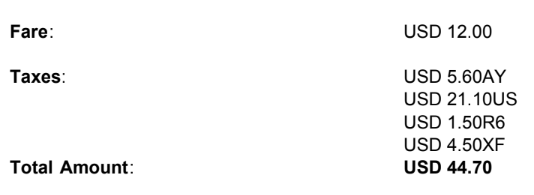
In order to spend as little money as possible on this trip, I purchased an ‘underseater’ bag which fits as a personal item on Avianca, Play, Norse Atlantic, Spirit, Frontier, and many more ULCC and main line airlines. For the IAD-SAL flight, a checked bag was $80 and a carry-on $95 one way – over two times the price of my airfare. Despite its compact form, I was able to comfortably pack my laptop, chargers, toiletries, and 4-5 different outfits along with a small tote to use as my day bag while traveling around. Using packing cubes helped me to fit everything and keep all of my clean and dirty clothes organized and the fact that it had wheels made it easy to move around the airport. Here is a link to the bag I purchased on Amazon in case you are interested.


My 4.5 hour flight was uneventful and we landed in San Salvador on schedule. The tourism sector is clearly still developing as the other passengers on the plane were primarily Salvadorans and the ‘tourist’ line at immigration was empty except for myself and a few others. I was pleasantly surprised that I was able to pay my $12 customs tax using Bitcoin – although it took them a minute to get the machine set up for me to scan their QR code with my Bitcoin wallet.

La Libertad (Surf City) & El Zonte (Bitcoin Beach)
After spending the night in San Salvador upon my arrival, I picked up a rental car the following morning and proceeded to the town of La Libertad on the Pacific Coast, also known as ‘Surf City.’



There was definitely a more boho, laid-back, surfer vibe here vs. San Salvador, the capital city. Lots of new trendy cafes/bars/restaurants, small hostels and boutique hotels, and surfers as well as local Salvadorans visiting the fish market and small carnival along the boardwalk.



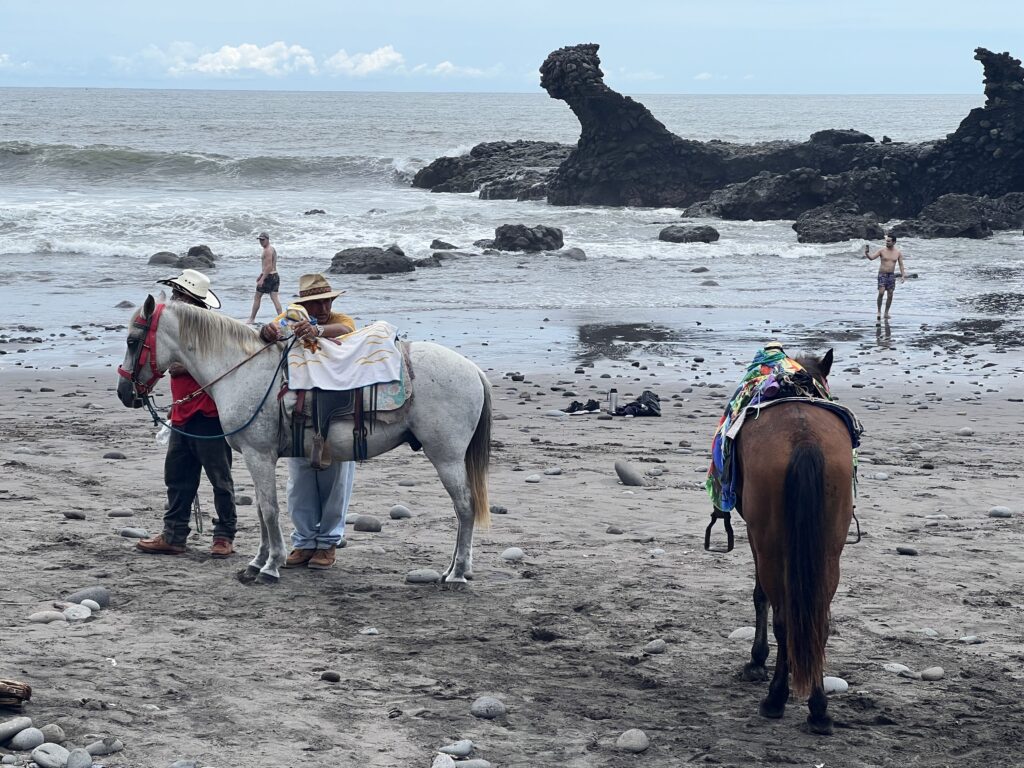
I loved the delicious coctel (total including beer was ~$5) and vibrant atmosphere at the La Libertad fish market. Lots of families and large groups of friends together with groups of mariachis roaming around performing song requests.

After visiting La Libertad, I drove for thirty minutes over to El Zonte – also known as ‘Bitcoin Beach’ as this was the community that served as inspiration for President Bukele to make Bitcoin a national currency alongside the US Dollar in September 2021. Read more about my thoughts on El Salvador’s Bitcoin experiment in this post.
I stayed at the Hotel Michanti for two nights which was a delightful and relaxing experience. The staff were exceptionally welcoming upon my arrival and personally escorted me to my room and gave me a tour of the property. It was located just a few hundred feet away from the ocean and other nearby hotels/local restaurants with free parking on-site, although it is a bit out of the way from the main highway.
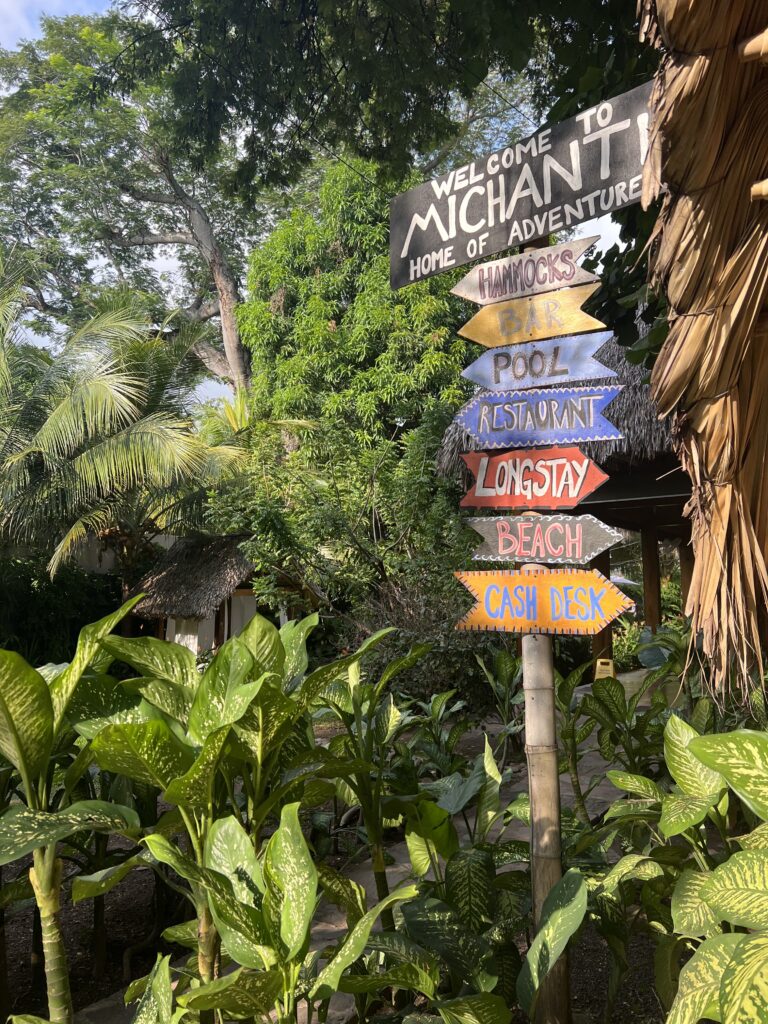
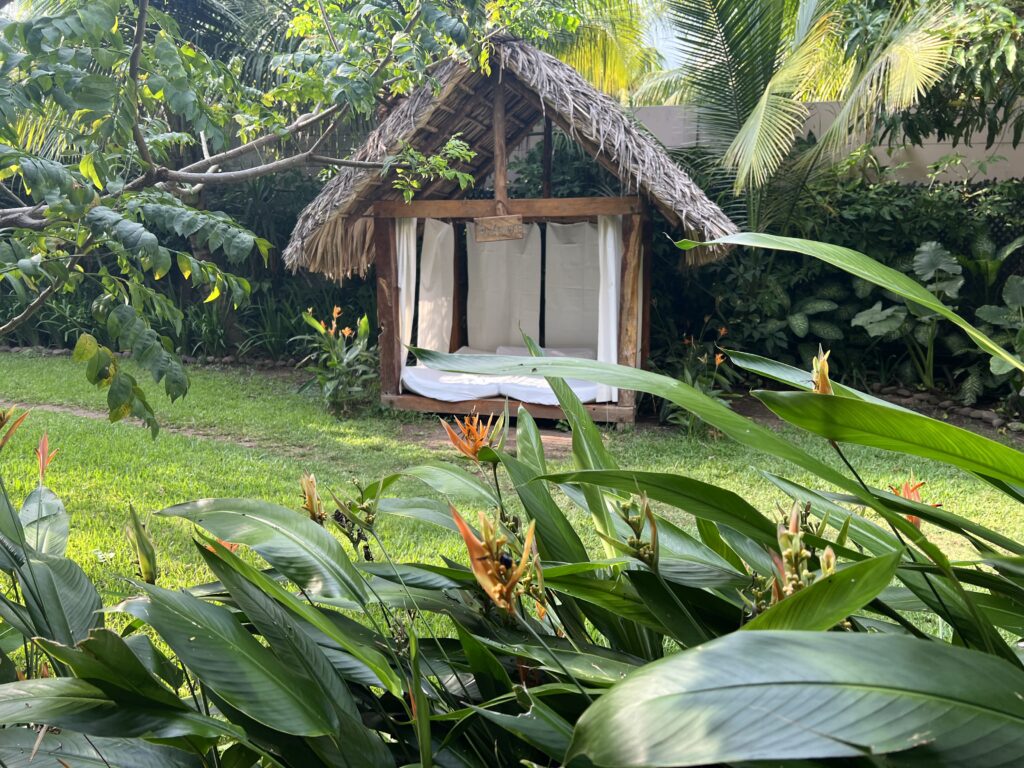


The beach in El Zonte had much more sand than the one in La Libertad and La Sunzal (which I just drove by) and there were many more people strolling, swimming, and even doing yoga by the ocean. Despite it being the rainy season, I still enjoyed my time hanging out along El Salvador’s Pacific Coast.

Ruta de las Flores & Coffee Plantation Tour
The following morning I set off for Ataco, the second-largest city along the Ruta de las Flores and home to the El Carmen Estate coffee plantation. I took the 90 minute tour which only cost $7 USD and took me step-by-step through the coffee production process, from planting and harvest through drying, processing, packaging, and roasting. Since my tour was on a Sunday during the rainy season, the production lines were turned off and the atmosphere was peaceful – normally it is incredibly loud and bustling with activity.

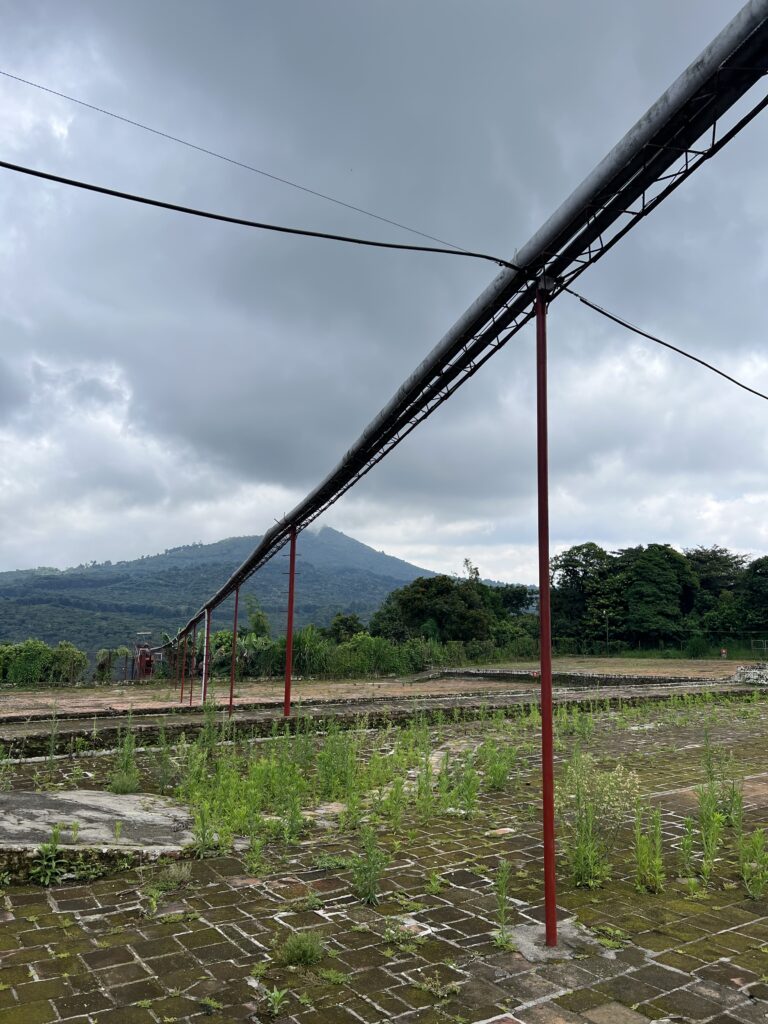
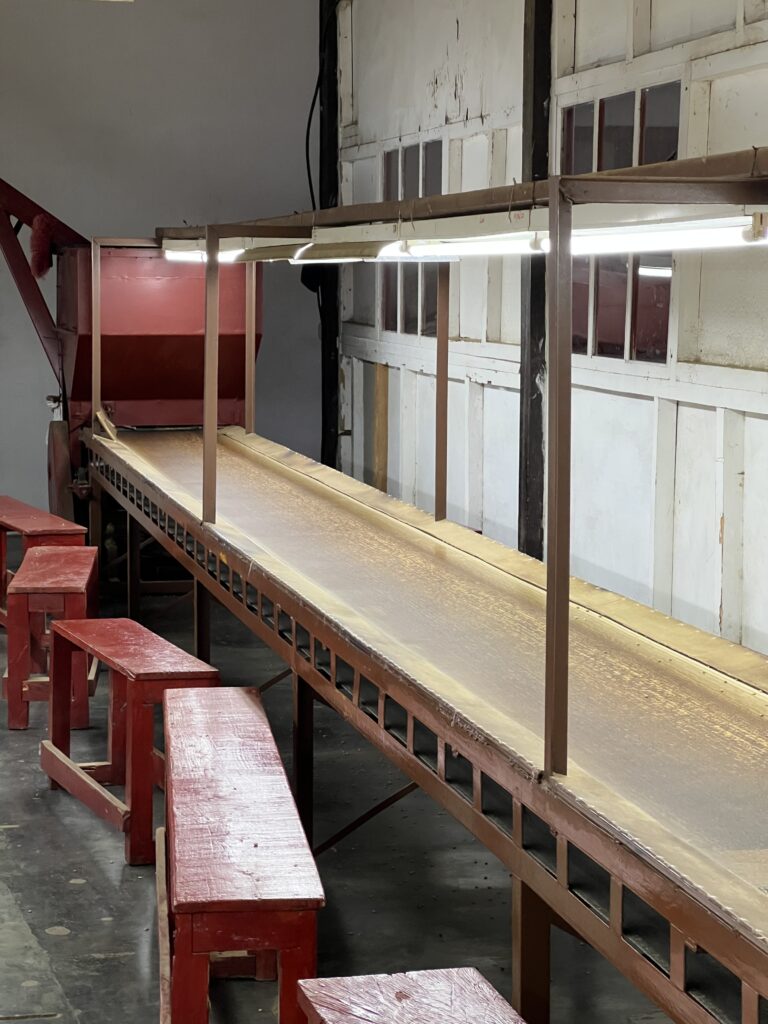


After we finished the tour, we moved on to the tasting which was by far my favorite part. Our tour guide explained that people in El Salvador generally do not like dark roast or stronger coffee, typically preferring instant coffee such as Nescafe, and prepared several versions of coffee for us to try. My favorite was the Geisha Coffee which is popular in Panama and is notorious for being very strong and intense but also sweet.

After the coffee tour at Finca El Carmen, I headed over to the Entre Nubes Cafe just outside of Ataco for a small lunch and delicious iced coffee. It was a nice atmosphere to chill and the forest canopy kept everyone dry despite the rain.


Continuing on along the Ruta de las Flores, my next stop was in the small town of Juayua which had a food festival happening during my visit. Everything looked and smelled delicious as all of the stall owners beckoned me over to order. The best part was that the prices were incredibly reasonable and food was brought out directly to your table as other stall owners that sold drinks walked around took orders. There were many local Salvadorans relaxing, visiting with family members, and having fun at the food festival which made for a lively atmosphere.




Final Thoughts on El Salvador

Given the limited time I had in El Salvador (only three nights) ahead of my planned week stay in Guatemala, I decided to rent a car so I could more efficiently travel around the country. If I had more time, I would instead take the chicken buses to go shorter distances and arrange for shuttle transfers through a tour operator to go farther distances. The road infrastructure was excellent as the majority of the national highways have been re-paved in recent years, however there were nearly zero street lights and many of the semi trucks drove sharply around corners so it is not recommended to drive at night (along with the safety risks that come with driving at night, anywhere in the world).

I felt safe my entire trip but did not spend much time in the city center of San Salvador, which like the capital cities of other Central American countries should generally be avoided. There was a very visible military and police presence throughout the country but they are very respectful of tourists and do not demand bribes or otherwise hassle you.
El Salvador definitely deserves a longer visit, to visit Lago Coatepeque and hike the Santa Ana Volcano among other attractions, and I anticipate returning soon given the sheer availability of cheap flights from DC. Do not expect the level of tourist infrastructure that you see in Costa Rica as El Salvador is still in the very early stages of developing their tourism industry, however, that makes it the perfect time to visit if you are seeking slightly more adventure. Had I have known that my trip to Guatemala would be cut short, I would have extended my stay in a heartbeat.
0 Comments